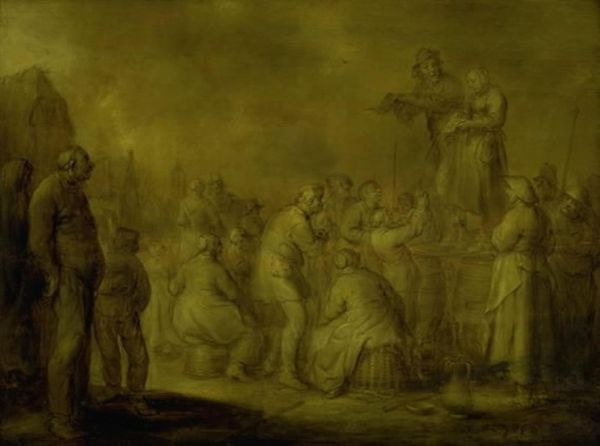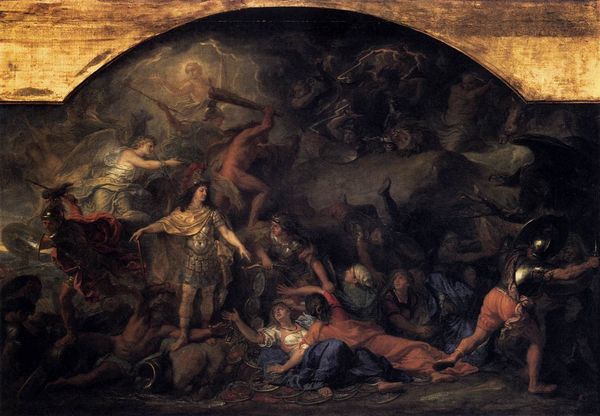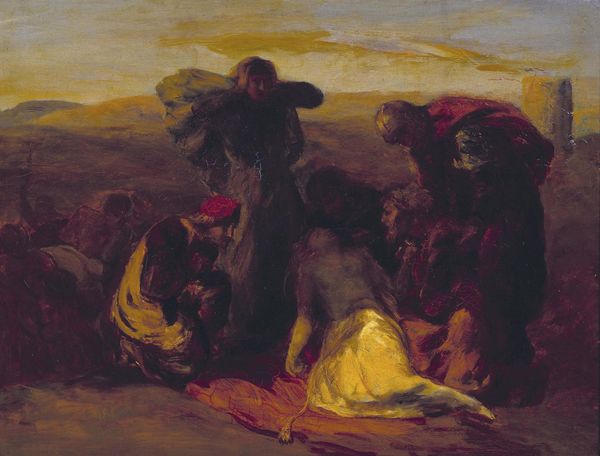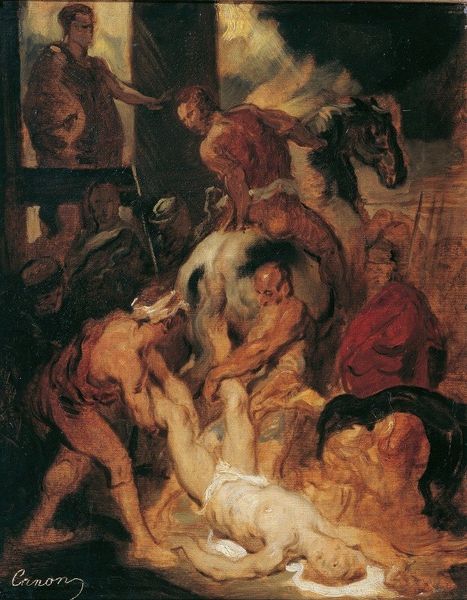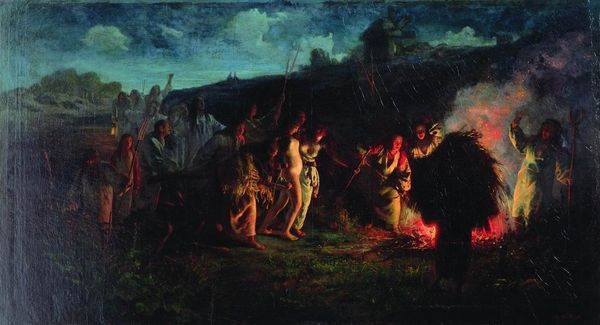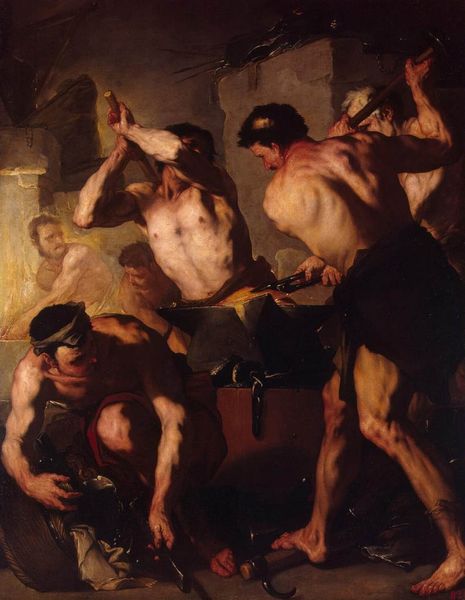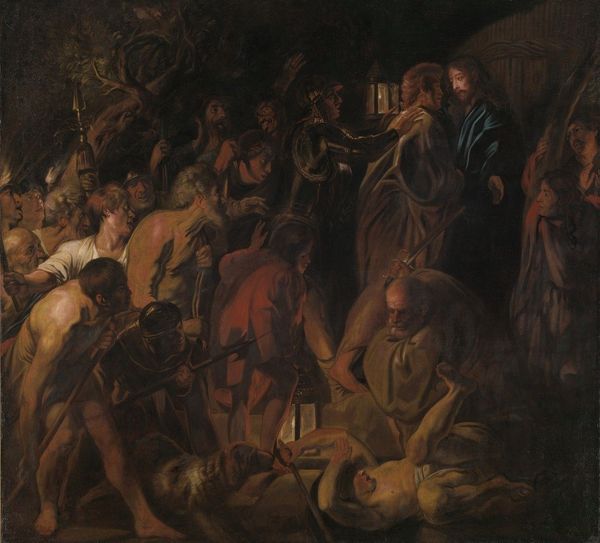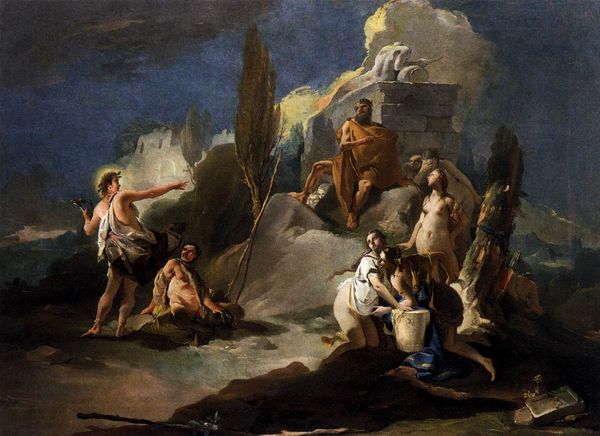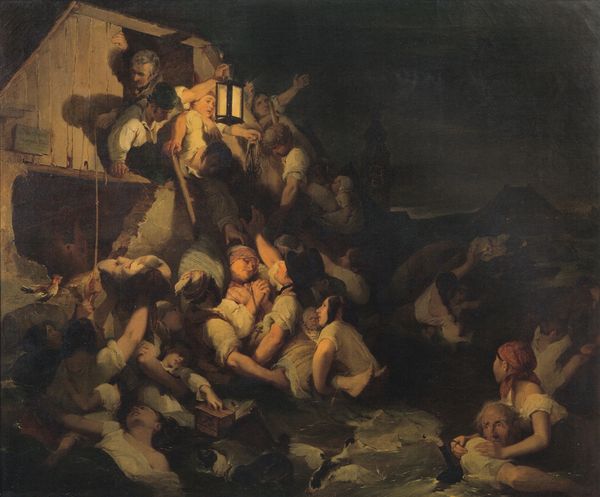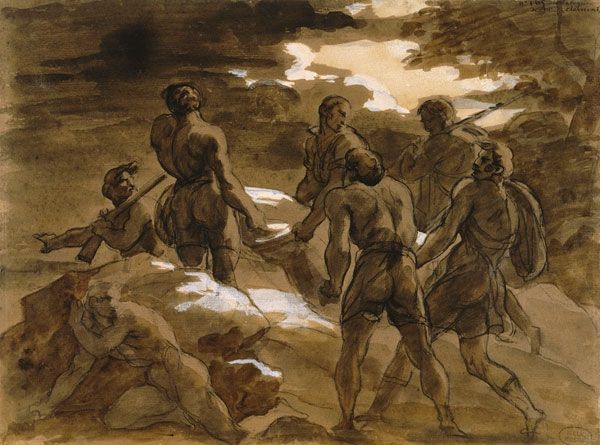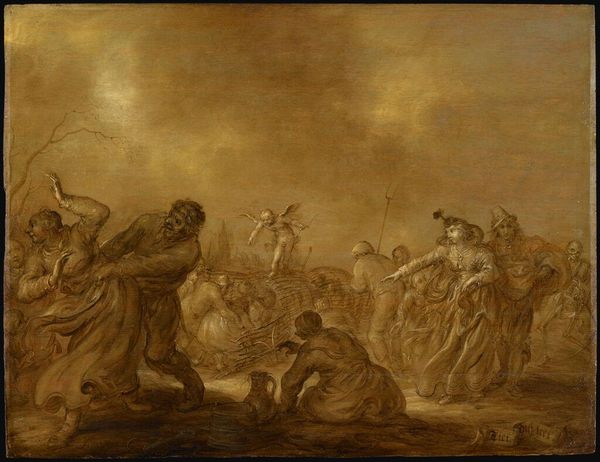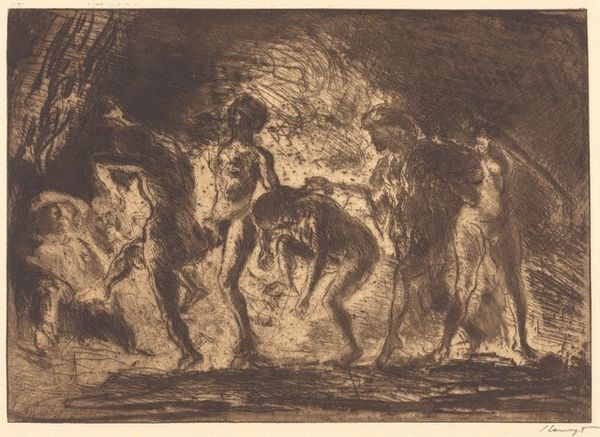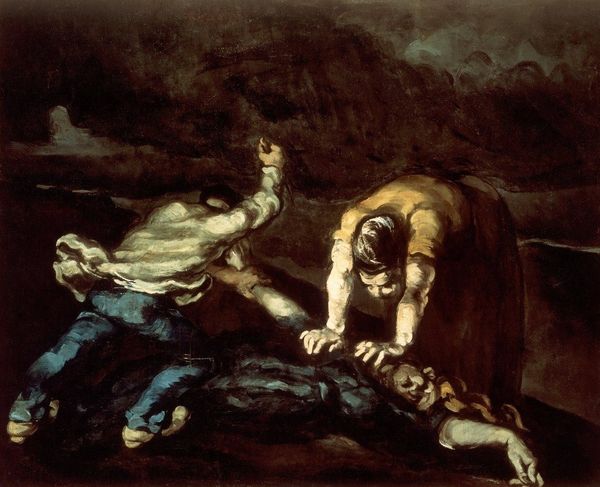
oil-paint
#
portrait
#
narrative-art
#
oil-paint
#
landscape
#
figuration
#
social-realism
#
oil painting
#
romanticism
#
genre-painting
#
history-painting
#
grotesque
Dimensions: 43.8 x 31.7 cm
Copyright: Public domain
Curator: This unsettling image before us, crafted in 1794 by Francisco de Goya, is titled "The Yard of a Madhouse". It's oil on panel, offering a chilling glimpse into confinement. Editor: My immediate reaction is…claustrophobia. That oppressive, box-like structure bearing down on the figures. The light, that pallid light…it feels like the hope’s been bleached out. What’s your read? Curator: Formally, the composition is remarkable. Goya's strategic use of the confining architecture – the stark geometry of the walls – forces our focus onto the figures. Note the muted palette, primarily browns and grays, reflecting the psychological darkness. Editor: And those figures…a writhing mass of humanity stripped bare, not just physically but emotionally too. It’s as if their inner turmoil has been laid out for our viewing, and it’s definitely unnerving. The one clutching himself in the front looks deeply unhappy. It’s as honest as it is bleak. Curator: Indeed, this artwork deviates significantly from Goya’s earlier, more decorative works. Here, he abandons courtly charm, venturing into social commentary. Consider, the Enlightenment ideals of reason and progress were being severely challenged by realities of social inequality. This piece serves as a visceral critique, confronting us with the harsh treatment of the mentally ill. Editor: Makes you think, doesn’t it? About how far—or how little—we've come in understanding and caring for the most vulnerable. What does confinement mean? To have your mind caged, your body caged... it raises all sorts of uncomfortable questions. Plus, the expressions. Some are ecstatic, others are agonized, but mostly—and maybe it's just me projecting here—they look trapped. Like they’re performing madness rather than experiencing it. Curator: The stark contrast between the confined individuals and the vast emptiness above does reinforce the experience of feeling cut off from rationality or connection. Goya presents a rupture in the traditional artistic order, depicting not heroism but human fragility. Editor: It stays with you, doesn’t it? The power of art to shake you up, to force you to confront things you’d rather ignore. It reminds you how connected to humanity—in its brilliance and brutality—you really are. Curator: Goya challenges the conventional representations of his time, paving a new path of visual, historical, and emotional expressiveness in art history.
Comments
No comments
Be the first to comment and join the conversation on the ultimate creative platform.
